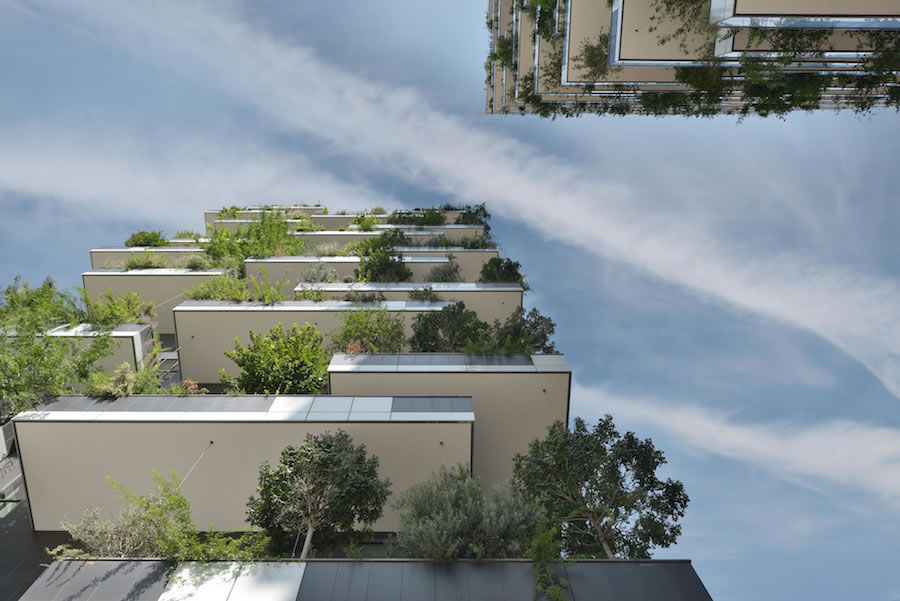During a trip to Dubai a few years ago, architect Stefano Boeri couldn’t escape the concept of vertical cities. The breakneck building boom in the desert metropolis had created walls of glass and steel, new neighborhoods stretching along a skyward axis where none existed before. The vertical sprawl inspired the Italian architect to devise an alternative with an organic edge. Bosco Verticale (or, vertical forest), his response and revolutionary take on ecological high-rise developments, consists of twin towers in Porta Nuova, Milan, that support a literal forest in the sky. “It’s like an injection of biodiversity,” Boeri says, since the 26- and 18-story towers, which support thousands of trees and shrubs that blossom off its balconies, add the equivalent of roughly five acres of parkland to the city. Since opening last fall, the concept has planted a seed for developers around the world. Boeri is already discussing similar projects in China, including incorporating a vertical forest into the façade of the Old Stock Exchange Building in Shanghai.

The project consists of twin towers in Porta Nuova, Milan that support a literal forest in the sky.
PROJECT
LOCATION Milan, Italy
Size 430,556ft 2 Completion 2014
Awards 2014 International Highrise Award
Cost $70.9 million
TEAM
OWNER Hines Italia Architect Boeri Studio
Structural Engineer Arup
Interior Design Dolce Vita Homes and Coima Images Landscape Architect Emanuela Borio and Laura Gatti
PLANTING ROOTS
During the long development phase for the project, Boeri and his team realized the true challenge of planting hundreds of full-grown trees on the sides of two residential towers wasn’t the added weight, it was the wind. All those braches could become a series of sails during a storm. In collaboration with structural engineer Arup, the team experimented with numerous balcony configurations, testing angles and measuring potential vibrations before settling on a tiered system that minimized the danger of being caught in the breeze. The stacked design and dense foliage is truly rooted, and offers the added benefit of shading residents from both the sun and the sounds of the city. “It just transmits this idea of sustainability,” Boeri says. “Imagine you’re in your bedroom a dozen stories up and look out your window, and it’s partially covered by the leaves from your neighbor’s tree.”
ROOM FOR GROWTH
Extending 11 feet out above Milan, the balconies of Bosco Verticale don’t just provide a pleasant view or shaded spot to relax. The variety of plants on the building create a microclimate above one of Europe’s most polluted cities, producing humidity, turning CO2 into oxygen, and removing dust from the air. While the airborne amenities get the most press, don’t discount the ground floor. By locating parking facilities underground, the designers made room for a cycling area and public square.
NEW TYPES OF TENANTS
An arboretum now runs between the two towers of Bosco Verticale, which boasts 900 trees, 5,000 shrubs, and 11,000 floral plants. “I really wanted to see if it was possible to have a real forest,” he says. “I didn’t want homogenous trees. I wanted something diverse.” To encourage that diversity, Boeri consulted with landscape artists to devise just the right mix; they even released a swarm of ladybugs on site to battle pests, so they wouldn’t have to resort to pesticides. The patient, planned community of plants has paid off; Boeri says they’ve counted nests from 20 different birds spread among the vertical forest.

